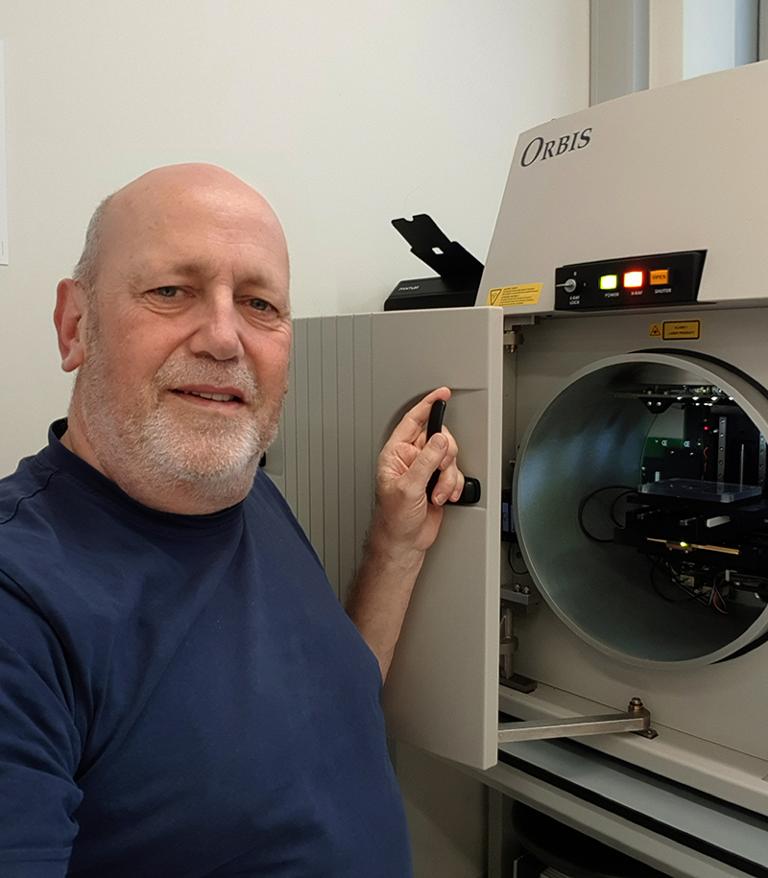
My work at the laboratory focuses mainly on Geology but I also assist research in the biological sector. I am experienced in assisting the Netherlands Gemmological Laboratory, including UVVIS, FTIR, XRF (micro-spot X-ray analysis and mapping), 3D and 2D Xray imaging and many more techniques. The Gemmological Laboratory is part of Naturalis. My latest expertise is operating the XRADIA Versa 520 micro-CT scanner for a broad-based internal and external support.
Keywords:
Light Microscope, SEM, FEG SEM, Xradia Versa 520, Skyscan, FTIR, UVVIS, Faxitron, Raman, Edax XRF, NEL
Researchinterest
My favorite objects for 3D X-ray imaging are fossils, pearls, insects and NFI materials.
While working at The Netherlands Gemmological Laboratory my favorite research instruments are the Orbis X-Ray element detection and element mapping, FTIR (Infrared spectroscopy) and UVVIS (Ultraviolet–visible spectroscopy).
My favorite stone is the natural sapphire from Kashmir. Sapphires were first discovered in Kashmir around 1880. The most marked feature is a distinct growth zoning, which usually results in a pattern of alternating transparent and slightly “milky” growth bands.
One of my goals is providing technical assistance within the Netherlands Gemmological Laboratory by testing pearls, cut and rough minerals. I use a variety of instruments such as the UVVIS, FTIR, 2D and 3D X-Ray technics. Element testing on the Orbis Micro-XRF Analyzer, that incorporate fast, simultaneous multi-element X-ray detection with the sensitivity to analyze from parts-per-million to 100% concentrations. Technics that will help to identify minerals (cut or rough).
Another goal is providing technical assistance for most research departments to analyse material within the Naturalis collection such as bone, plants and insects etc. by using 3D-X-ray imaging technics with a minimal spatial resolution of 0.7 μm resolution.
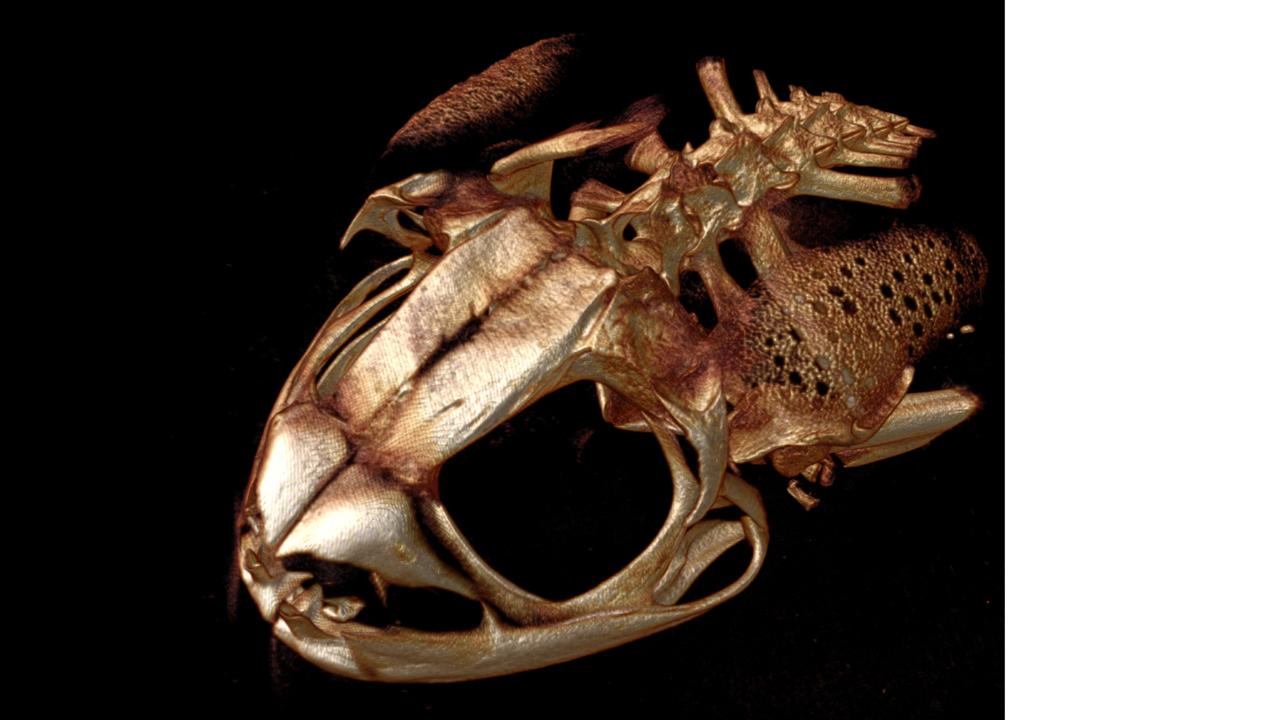

Examininga dragonfly
At the laboratories of Naturalis Biodiversity Center
An unknown dragonfly species has been observed around Naturalis, which is being caught. After this it will start a journey through the different labs. He is viewed / analyzed with various devices. The people who work with this in daily practice explain this. In the end, everything appears to indicate that it is an exotic dragonfly that a researcher at Naturalis Biodiversity Center has described.
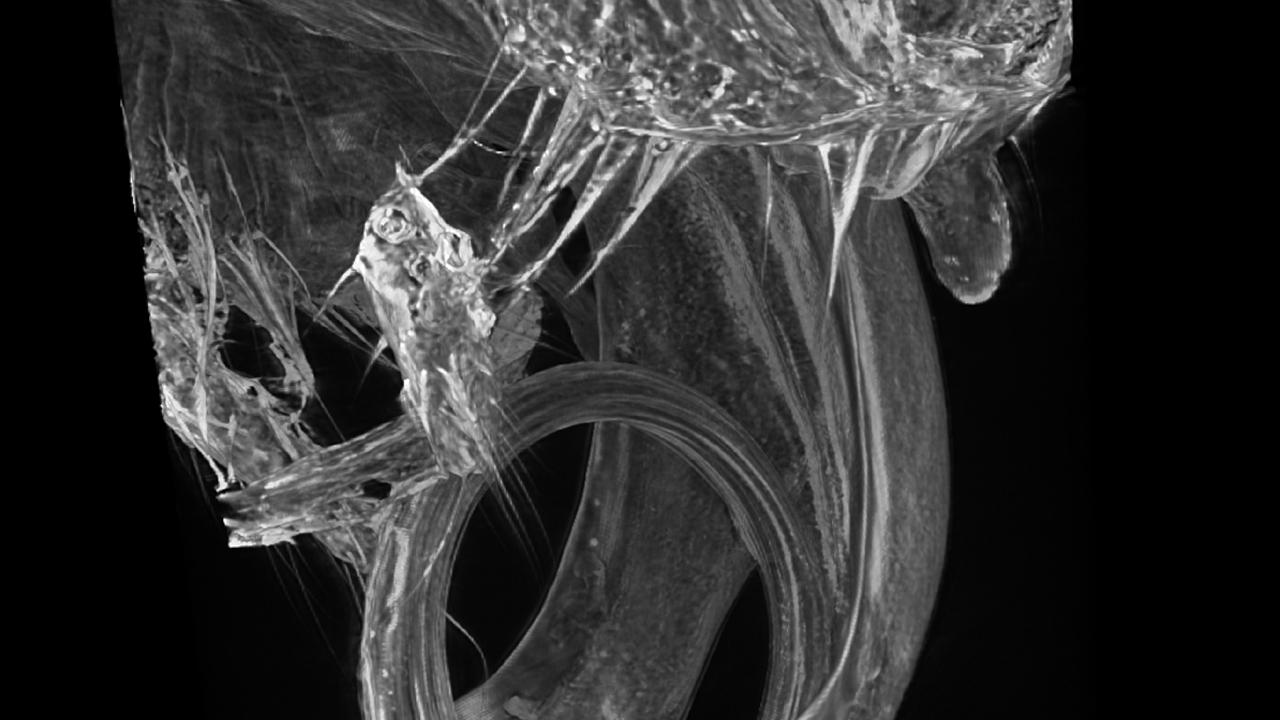
Explanation about the different research techniques
- SEM (JSM-6480 LV)
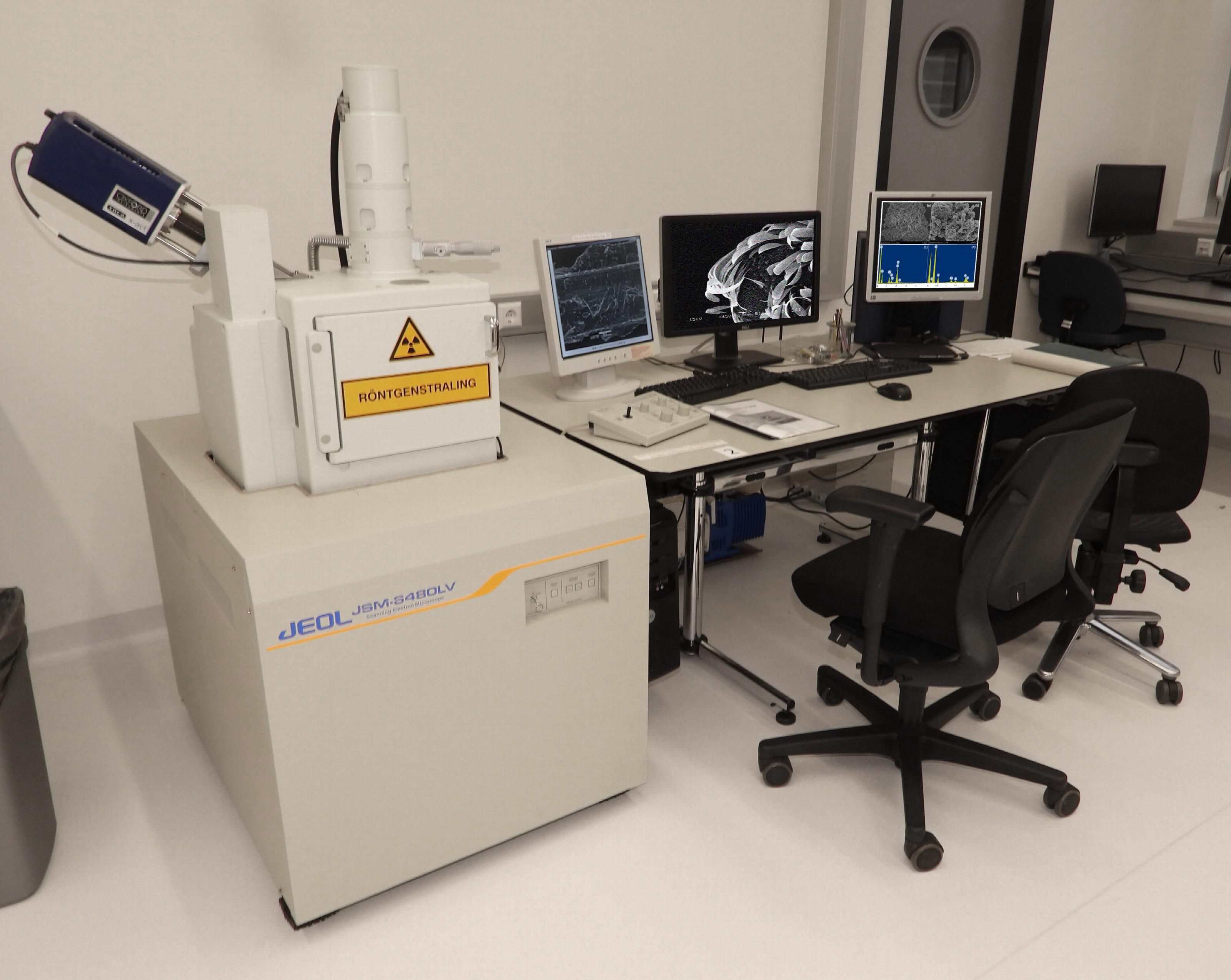 The Jeol JSM-6480 LV is a high-performance, scanning electron microscope with a high resolution of 3.0nm. The low vacuum mode (which can be accessed by the click of a mouse), allows for observation of specimens which cannot be viewed at high vacuum due to excessive water content or due to a non-conductive surface. Its asynchronous five-axis eucentric stage with compucentric rotation and tilt can accommodate a specimen of up to 8-inches in diameter. Standard automated features include Auto Focus/Auto Stigmator, Auto Gun (saturation and alignment), and Automatic Contrast and Brightness.
The Jeol JSM-6480 LV is a high-performance, scanning electron microscope with a high resolution of 3.0nm. The low vacuum mode (which can be accessed by the click of a mouse), allows for observation of specimens which cannot be viewed at high vacuum due to excessive water content or due to a non-conductive surface. Its asynchronous five-axis eucentric stage with compucentric rotation and tilt can accommodate a specimen of up to 8-inches in diameter. Standard automated features include Auto Focus/Auto Stigmator, Auto Gun (saturation and alignment), and Automatic Contrast and Brightness.
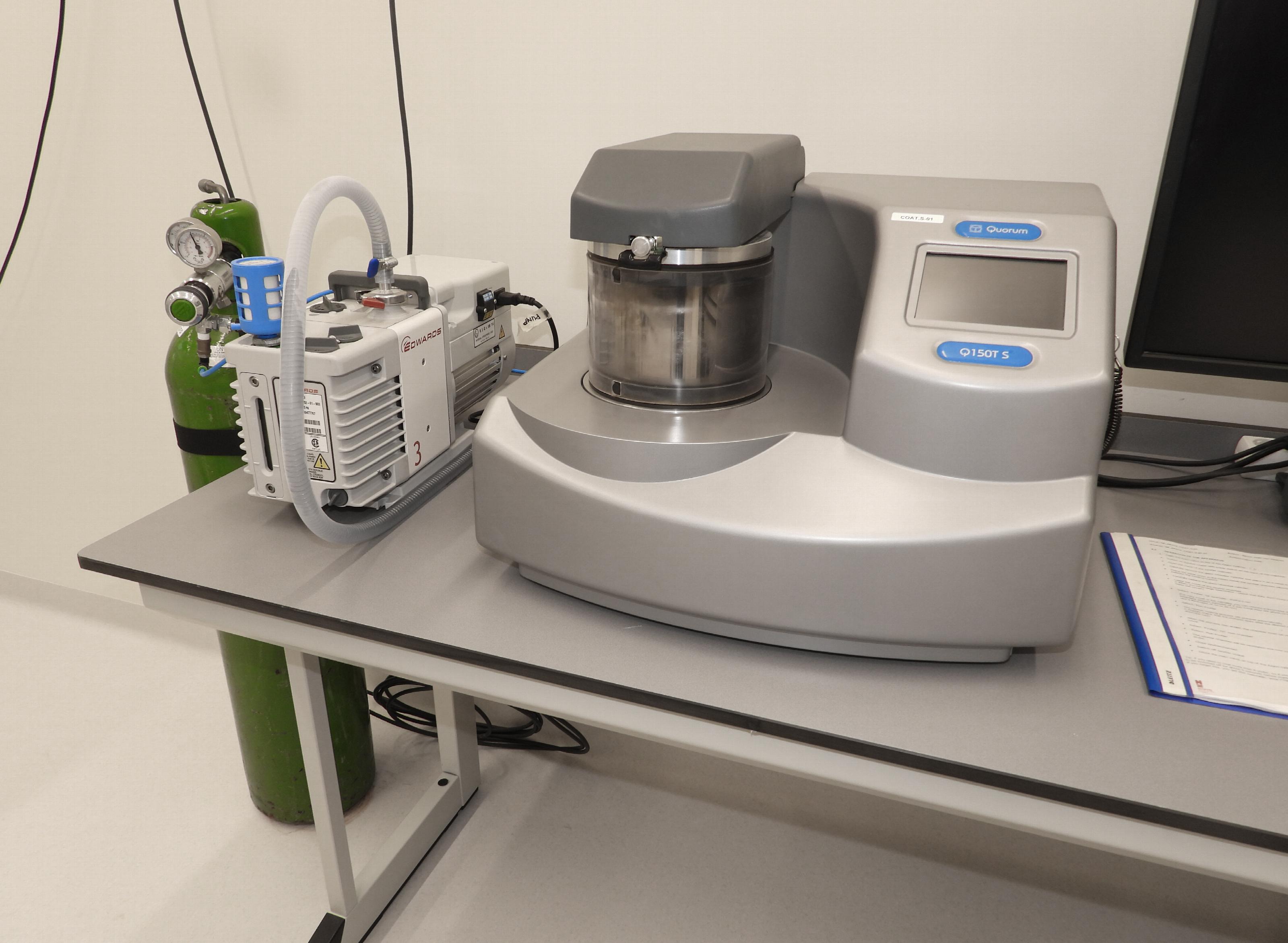 The Gold/Palladium Sputter Coater. The Au/Pd alloy (60/40) is less efficient to coat than with pure gold, which results in lower sputter rates. Au/Pd is often recommended to achieve a smaller grain size. Au/Pd gives smaller grain sizes when evaporated in high vacuum, but when used in SEM sputter coaters the difference between Au and Au/Pd is hardly visible. Less suitable for heat sensitive specimens and less suitable for EDX analysis due to the extra set of peaks for Pd.
The Gold/Palladium Sputter Coater. The Au/Pd alloy (60/40) is less efficient to coat than with pure gold, which results in lower sputter rates. Au/Pd is often recommended to achieve a smaller grain size. Au/Pd gives smaller grain sizes when evaporated in high vacuum, but when used in SEM sputter coaters the difference between Au and Au/Pd is hardly visible. Less suitable for heat sensitive specimens and less suitable for EDX analysis due to the extra set of peaks for Pd.
Selection of the optimum coating material depends on the (non-conductive) sample, the application and cost. Most SEM sputter coaters allow for a relatively easy target change. When using different coating (target) materials than Gold, the use of Argon as process gas is paramount. One should be aware that each sample material behaves differently when coated. The coating quality is obviously affected by the target material and by the interaction of the sample material and metal used for the coating. Coating the SEM sample with a (highly conductive) metal makes non-conductive SEM samples conductive. An additional benefit is that most coating materials have a higher secondary electron (SE) yield than the non-conductive sample material. Coating material with lower atomic numbers is more suitable for backscattered electron (imaging) whereas coating with higher atomic numbers is more suitable for SE imaging. Below you will find some practical guidance information for selecting the target material. The information is only valid when using modern DC magnetron SEM sputter coaters and Argon as process gas. If EDX analysis of the sample is needed, then always choose a coating (target) material which is not present in the sample, creates overlapping peaks in the EDX spectrum or otherwise interferes with the EDX analysis.
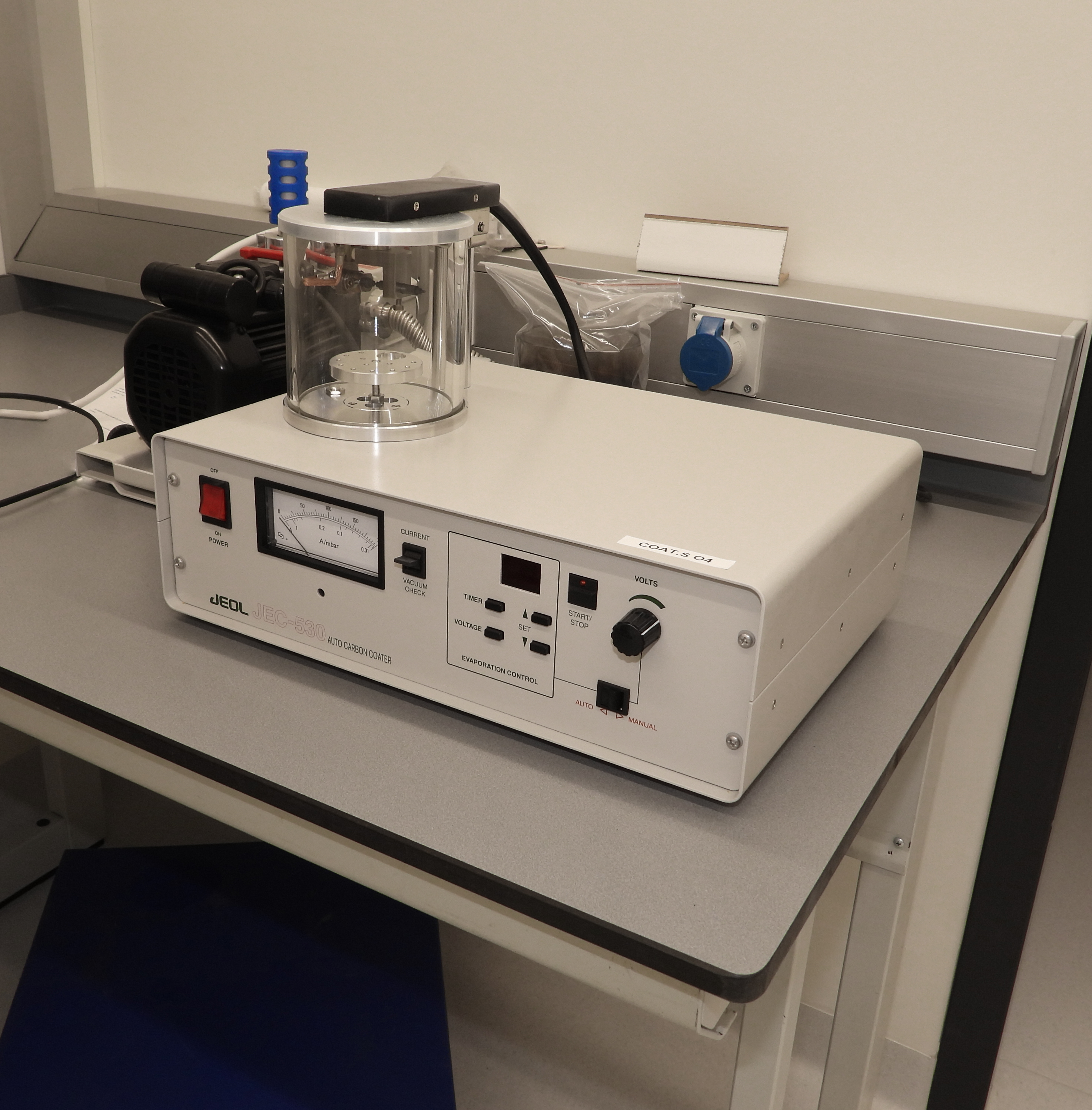 The Carbon Coater. The quality of your analyses is also highly dependent on the quality of the carbon-coat, assuming for the moment that the sample is well-polished. Contaminants on the surface of your slide will cause the carbon-coat to adhere poorly to your sample. The reason why the carbon-coat and its quality are critical factors in obtaining good analyses is that most materials, particularly rocks and most minerals, are not good electrical conductors. If the slides were not coated in carbon, almost all the electrons shot at the sample would accumulate to form a static cloud on the surface of the sample, and this static cloud would repel incoming electrons, preventing them from hitting your sample and producing measurable X-rays. Coating the sample in carbon permits excess electrons to conduct away from the focussed electron beam during analysis, and reduces the effects of charging. Even the electrons that produce X-rays have to conduct away from the point being analysed – they don’t magically disappear after having ionized your sample, resulting in the production of X-rays (conservation of matter). So, hopefully you now have a better appreciation of why the cleanliness and quality of polishing of your slides/samples are so important – they both effect the quality of the carbon-coat, which in turn effects the quality of your analyses. The thickness of the carbon-coat is also critical to getting good results.
The Carbon Coater. The quality of your analyses is also highly dependent on the quality of the carbon-coat, assuming for the moment that the sample is well-polished. Contaminants on the surface of your slide will cause the carbon-coat to adhere poorly to your sample. The reason why the carbon-coat and its quality are critical factors in obtaining good analyses is that most materials, particularly rocks and most minerals, are not good electrical conductors. If the slides were not coated in carbon, almost all the electrons shot at the sample would accumulate to form a static cloud on the surface of the sample, and this static cloud would repel incoming electrons, preventing them from hitting your sample and producing measurable X-rays. Coating the sample in carbon permits excess electrons to conduct away from the focussed electron beam during analysis, and reduces the effects of charging. Even the electrons that produce X-rays have to conduct away from the point being analysed – they don’t magically disappear after having ionized your sample, resulting in the production of X-rays (conservation of matter). So, hopefully you now have a better appreciation of why the cleanliness and quality of polishing of your slides/samples are so important – they both effect the quality of the carbon-coat, which in turn effects the quality of your analyses. The thickness of the carbon-coat is also critical to getting good results.
Drain (sewer) Fly
Here's an example of a simple scan of the drain (sewer) fly.
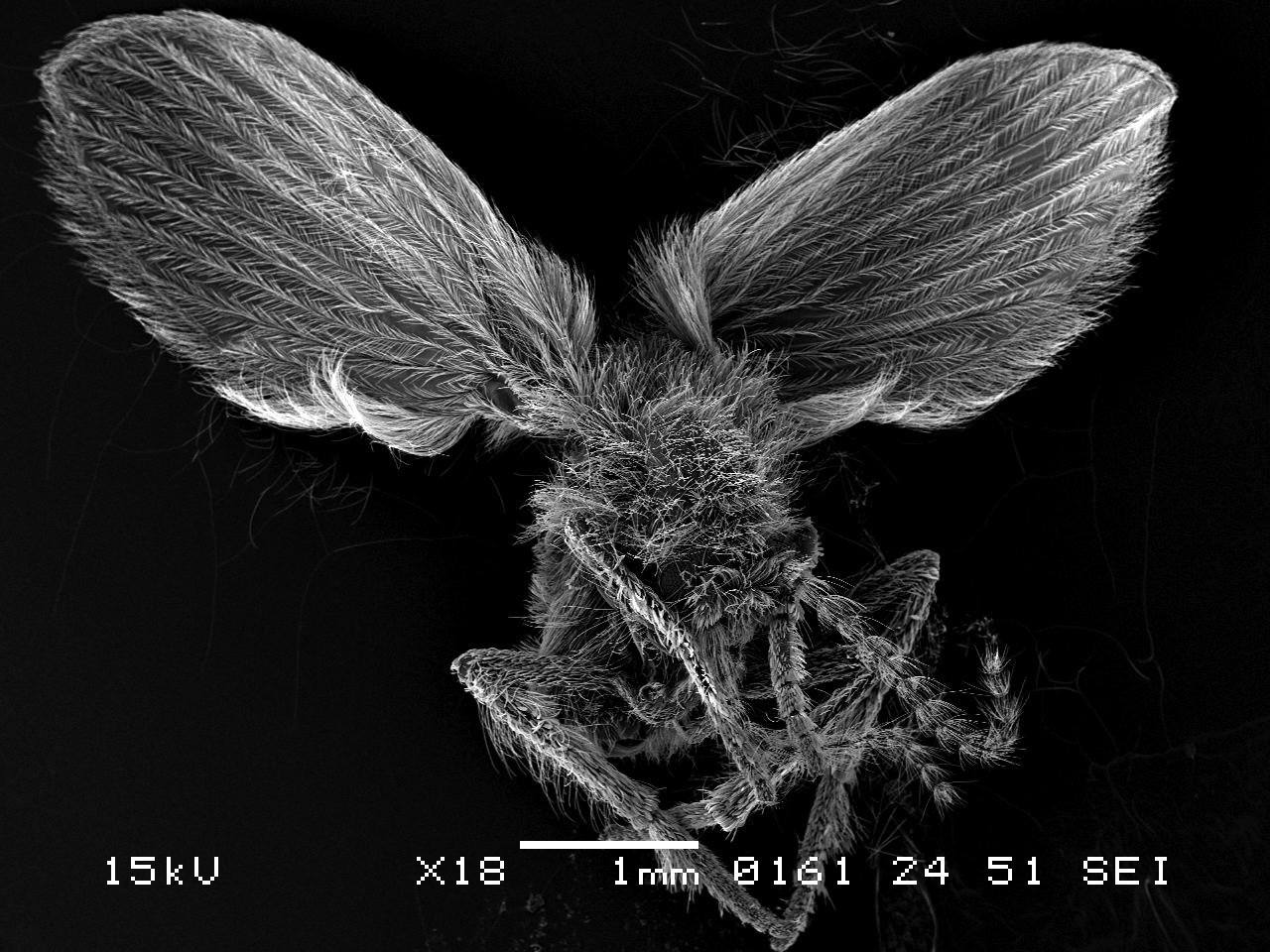
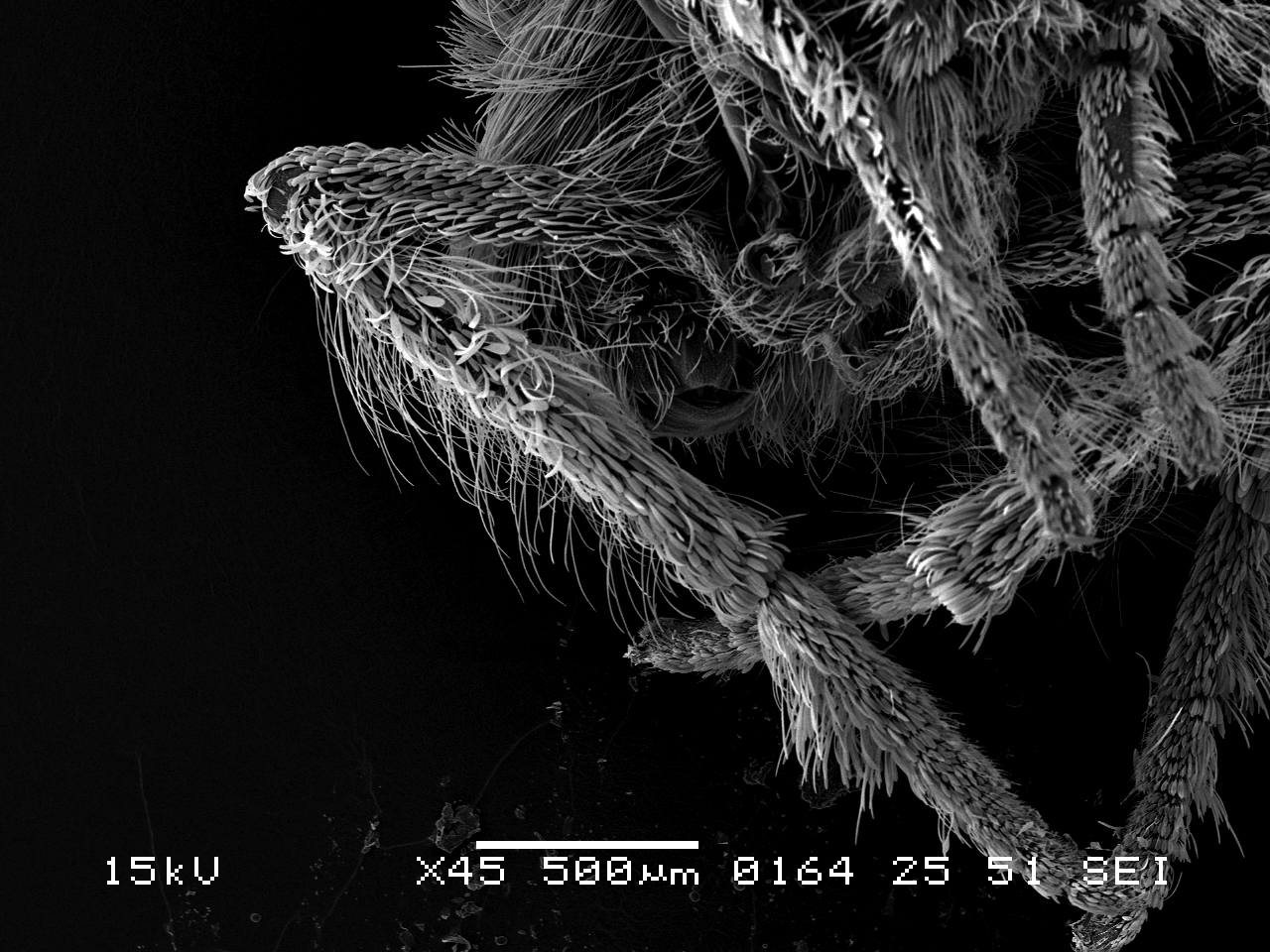
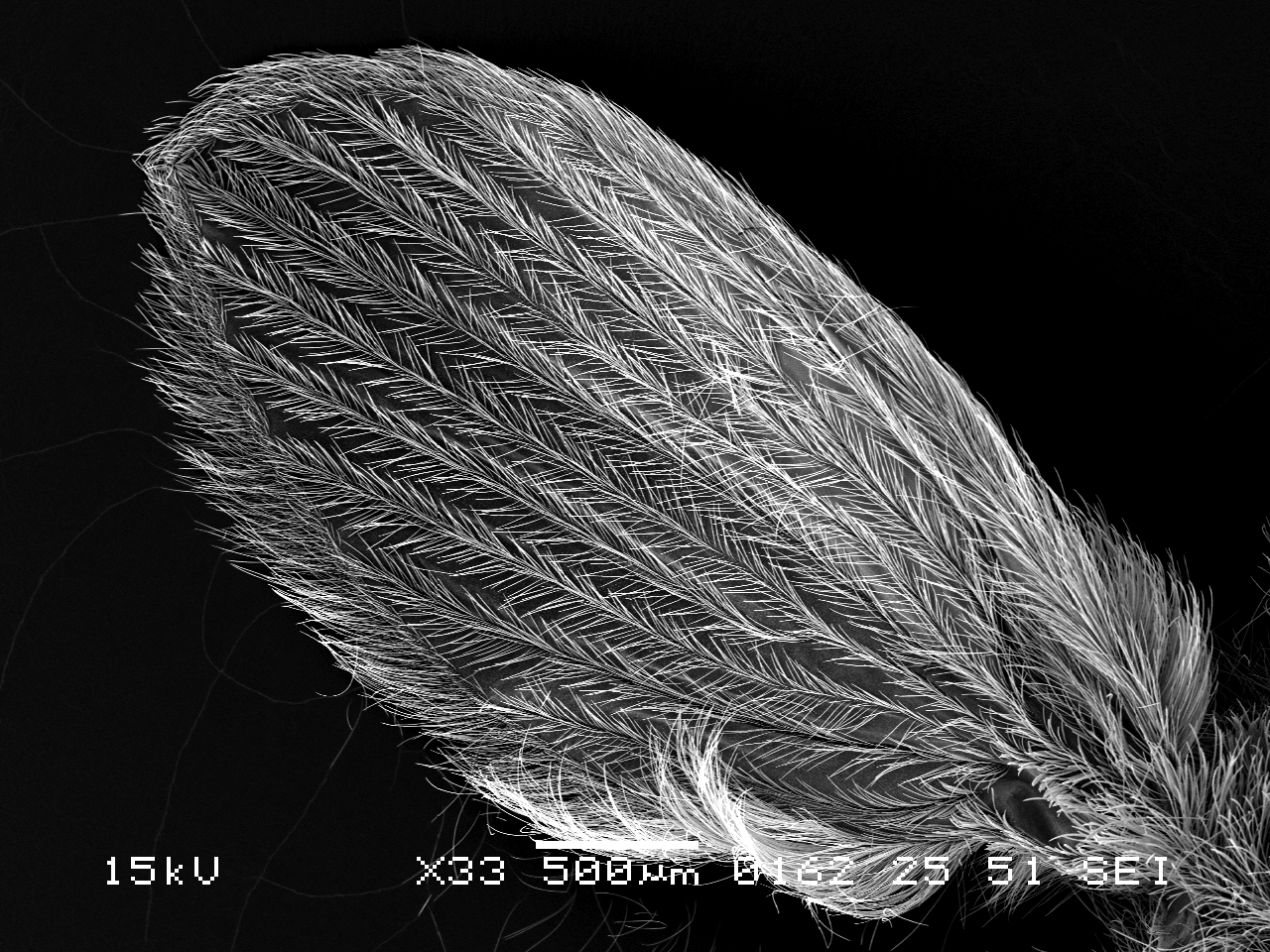
Appearance Drain Fly
- Appendages: These flies have six legs and a pair of wings and antennae.
- Body: Light gray or tan body and lighter-colored wings. The body and the wings are covered with long hairs, giving the fly a fuzzy appearance.
- Characteristics: When at rest, the drain fly folds its wings over the body in a characteristic roof-like manner.
- Size: Drain flies measure about 1.5 to 5 mm long.
- Larvae: Drain fly larvae are not longer than 4 to 10 mm when fully mature and they are slender with a dark strip on the "back" or dorsal area. Larvae do not have eyes, and they are legless. On one end of the larva, there is a dark breathing tube used to extend out of the film to obtain air.
- Habitat: Drain flies are common in moist areas coated with nutrient-laden organic material. As their name implies, they are found in house and storm drains. They can also be found near decaying logs and compost piles.
- FEG SEM (JSM-7600)
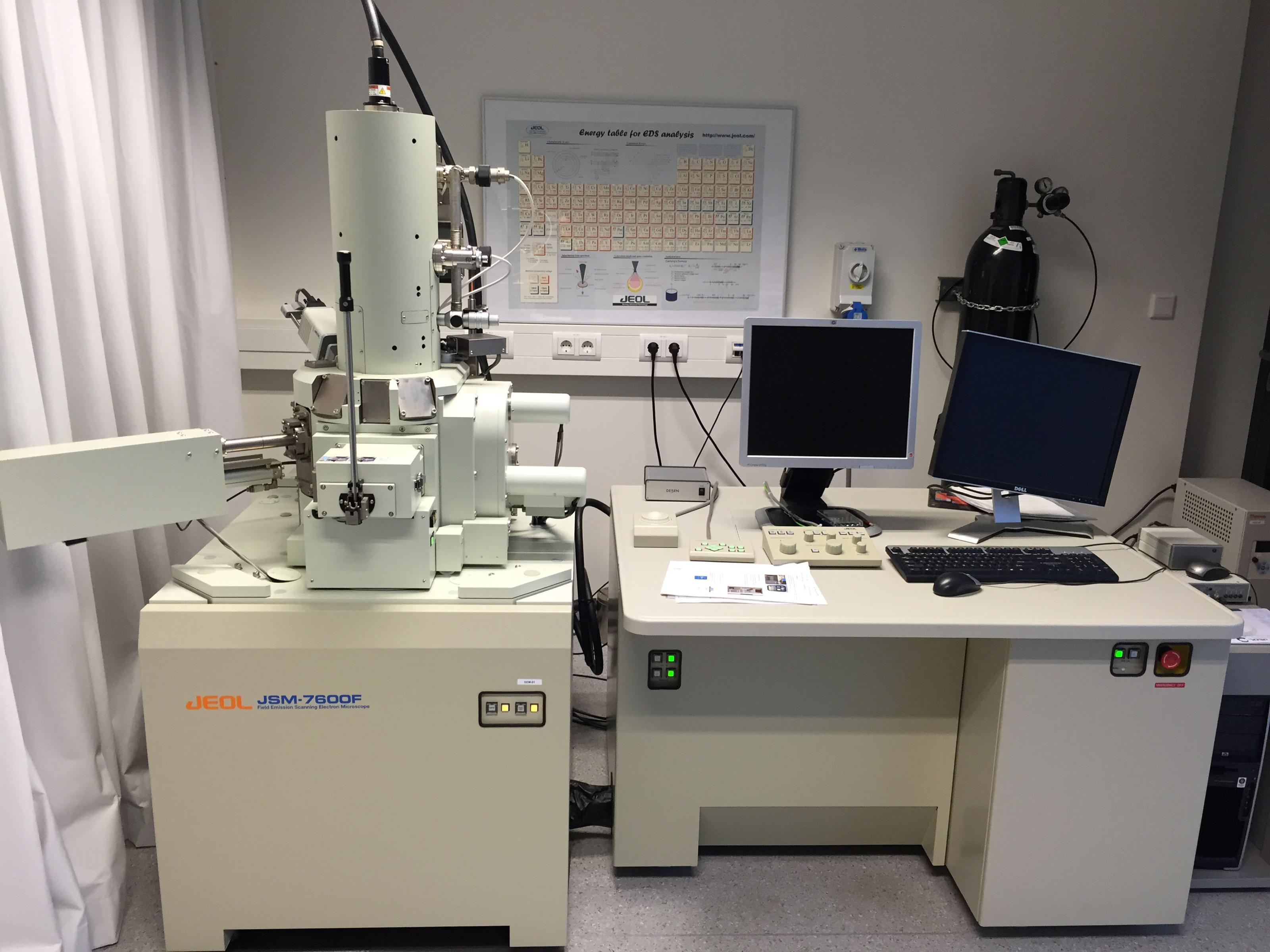
The JSM-7600 FEG SEM is a Field Emission Scanning Electron Microscope suitable to study surface structures at magnifications from 25x to 1.000.000x. A Scanning Microscope (SEM) sends a fine electron beam onto the sample. This generates secondary electrons which reflect from the surface of the sample. These secondary electrons are detected by the SEM and used to form an image showing the surface of the specimen. A Field Emisson Gun (FEG) generates a very fine beam that is suitable to give a very high resolution image.
- Xradia Versa 520 (3D Micro X-Ray imaging)
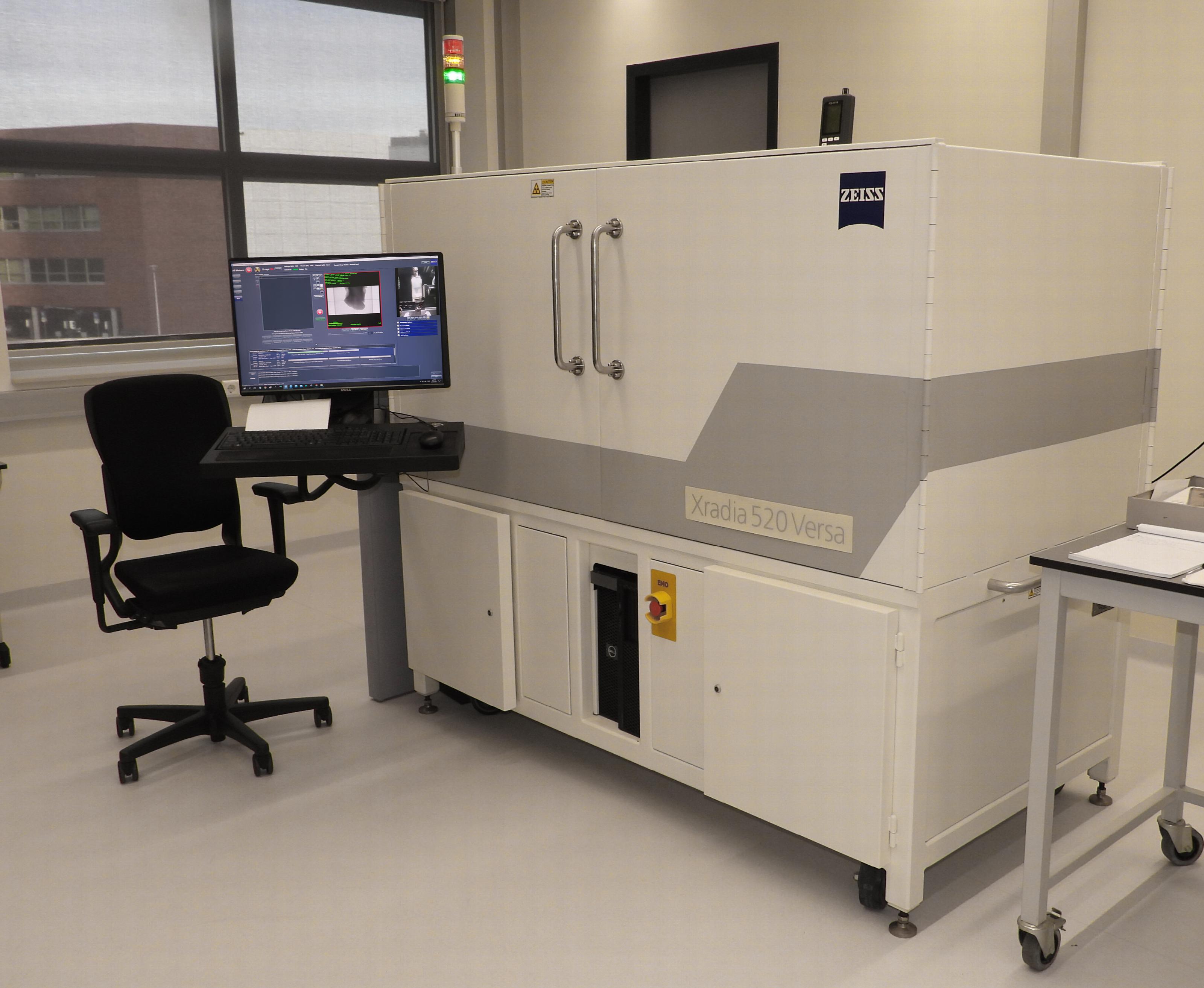 ZEISS Xradia 520 Versa 3D X-ray microscope opens up new degrees of flexibility for scientific discovery and builds on industry-best resolution and contrast, and expands the boundaries of non-destructive imaging for breakthrough flexibility and discernment critical for research. The Xradia 520 Versa achieves minimum achievable voxel of 70 nm and spatial resolution of 0.7 µm.
ZEISS Xradia 520 Versa 3D X-ray microscope opens up new degrees of flexibility for scientific discovery and builds on industry-best resolution and contrast, and expands the boundaries of non-destructive imaging for breakthrough flexibility and discernment critical for research. The Xradia 520 Versa achieves minimum achievable voxel of 70 nm and spatial resolution of 0.7 µm.
The ZEISS Xradia 520 Versa is equipped with a 160 kV micro focus X-ray source with maximum 10 Watt. Due to a unique setup of scintillator and 16-bit CCD 2024 x 2024 pixel camera, magnification is achieved by a two-stage technique including a microscope objective system. This enables a beam path through the sample with very little divergence, which is allows large working distance at high resolutions. The standard imaging mode of the XRM can be modified to offer several additional imaging techniques.
The method of the Zeiss Xradia 520 VERSA is based on the detection and localisation of the degree of attenuation of the incident X-rays in the sample. The attenuation of X-rays by matter depends on both the chemical elements it consists of as well as the material density. The information about the varied X-ray absorption in encoded as grey values in a stack of black-and-white images. Each image consists of voxels (volumetric pixels) and contains true volumetric information.
X-ray microscopy can characterize all materials that are transparent for X-rays, e. g. bio-materials, polymers, fiber textile materials, ceramics, semiconductors, rocks, or metals with high density. The sample surface does not have to be prepared in advance. In our lab we analyse biological samples (e. g., dragonflies, moths in amber), fiber composite materials from 3rd parties, single cell organisms (foraminifera), metal powders and high denisity metals (rockets) and many more. Using a wide variety of filters (Copper) placed in the AFC (Automatic Filter Changer) to meet the needs of many researchers at home and abroad.
This Automated Filter Changer (AFC) is easy to use and facilitates features such as DSCoVer and in situ applications on the Xradia 520 Versa instrument. Researchers commonly use source filters to tune the X-ray energy spectrum and every Xradia 520 Versa comes with a standard set of 12 filters. In addition to the standard range of filters, you will find 12 additional filter slots on the AFC to allow you to use custom source filters, such as filters composed of different materials or thicknesses.
We also Mount and align our specimens rapidly or expand the system with the (optional) Autoloader (Robot) for automated handling and sequential scanning of up to 14 samples. often used when scanning a large amount of samples during weekends.
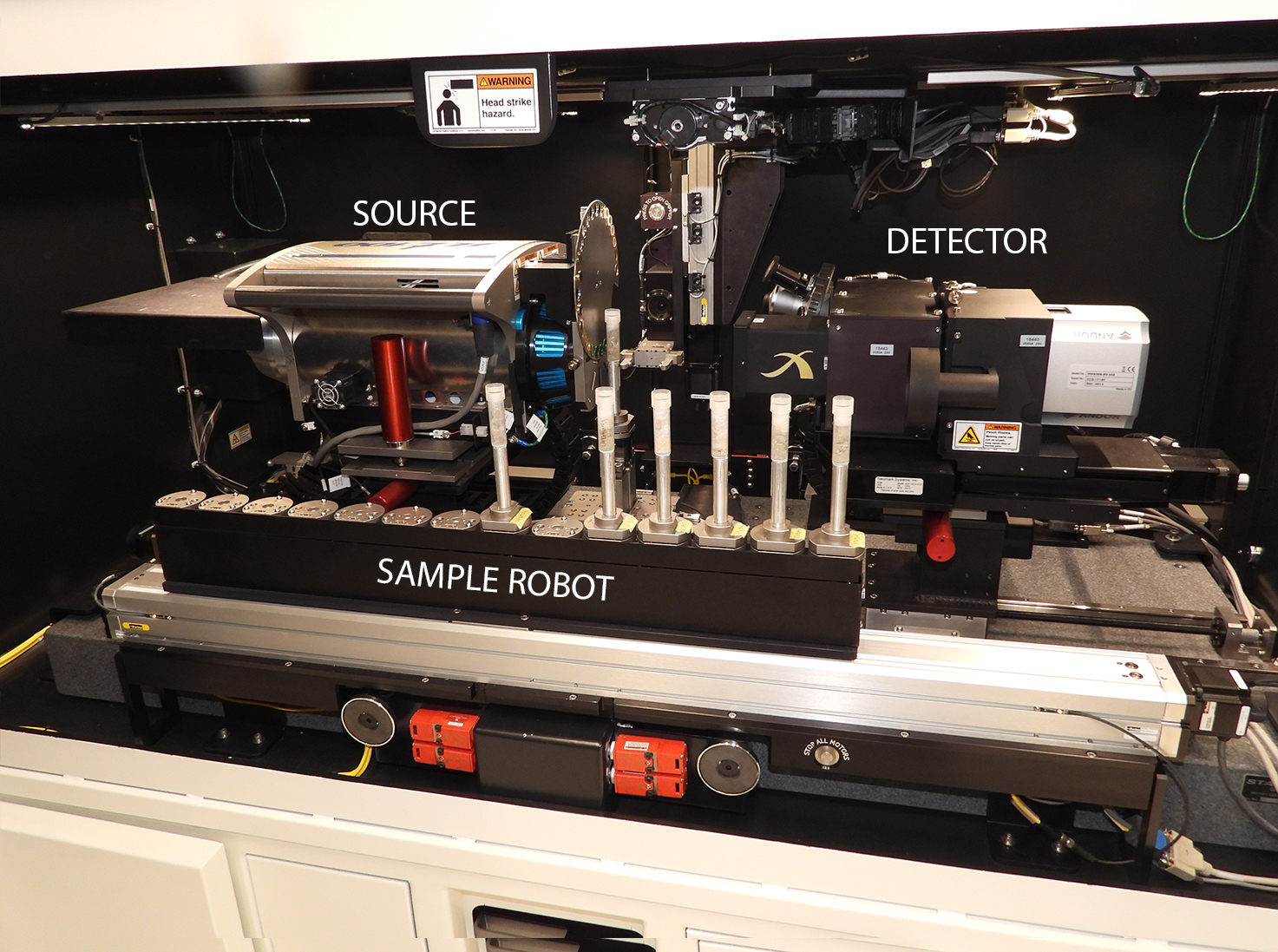
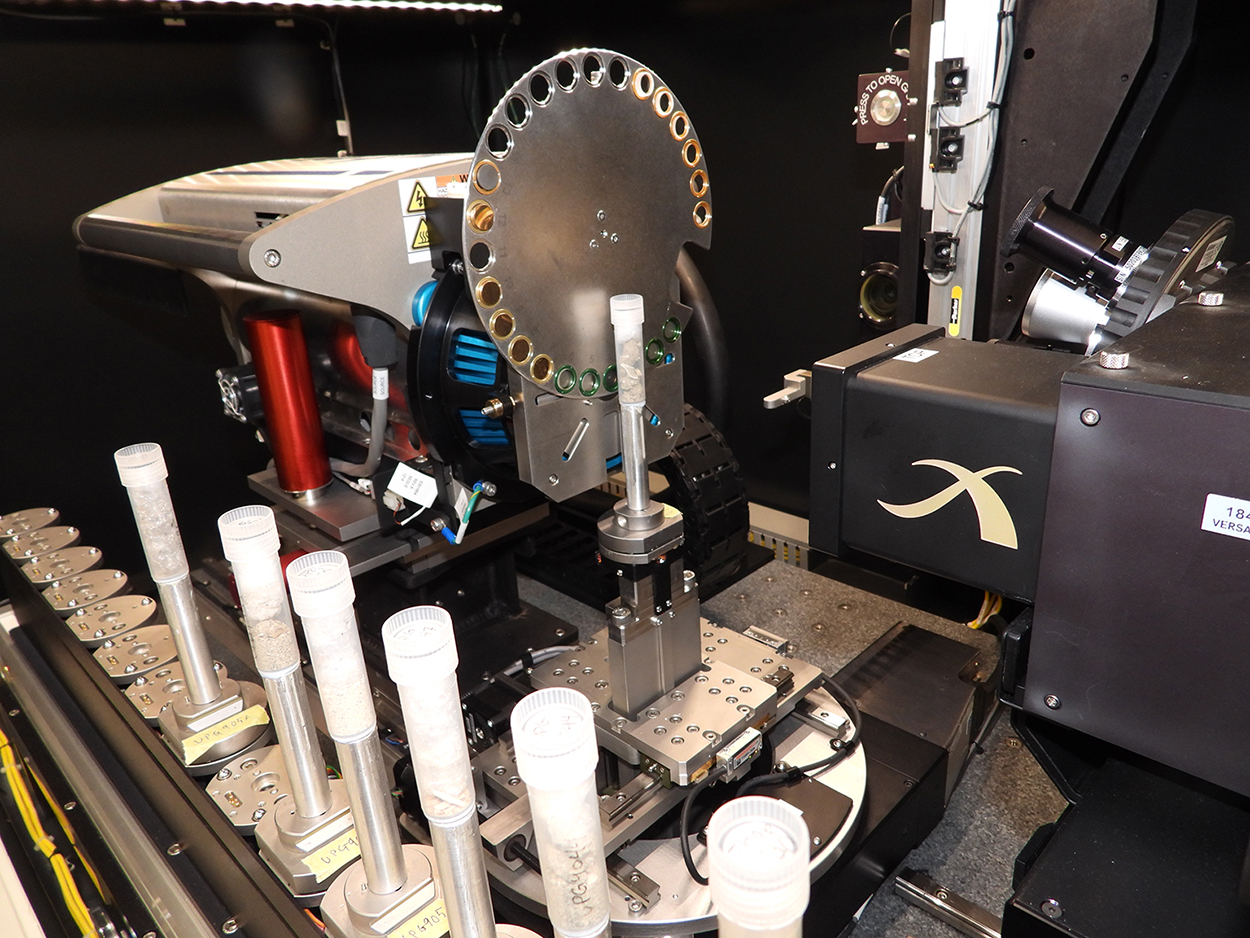
- Skyscan 1172 (3D Micro X-Ray imaging) to be replaced
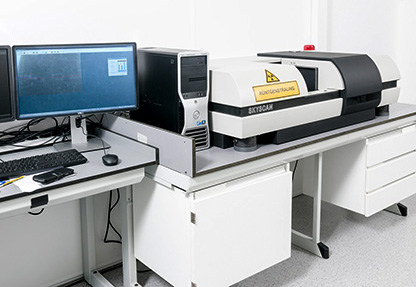 Briefly, the system obtains multiple x-ray “shadow” transmission images of the object from multiple angular views as the object rotates on a high-precision stage. From these shadow images, cross-section images of the object are reconstructed using a modified Feldkamp cone-beam algorithm, creating a complete 3D representation of internal microstructure and density over an investigator-selected horizontal region in the transmission images.
Briefly, the system obtains multiple x-ray “shadow” transmission images of the object from multiple angular views as the object rotates on a high-precision stage. From these shadow images, cross-section images of the object are reconstructed using a modified Feldkamp cone-beam algorithm, creating a complete 3D representation of internal microstructure and density over an investigator-selected horizontal region in the transmission images.
The Skyscan 1172, 50mm FOV (image field width) is a desktop ex vivo microCT specimen scanner. This instrument has a fully distortioncorrected 11Mp X-ray camera that is a 12-bit cooled CCD fiber-optically camera coupled to scintillator. The X-ray source is 20-100kV, 10W, with a <5µm spot size. The detail detectability is 1µm at highest resolution to 25µm. Importantly, the Skyscan 1172 has an innovative dynamically variable acquisition geometry that provides the shortest scan times possible at any magnification (adaptive geometry features explained more fully below). Cross-section images are generated in a wide range of formats up to 8000 x 8000 pixels. The maximum object size is 50mm in diameter or height. Reconstruction can be performed using either a single PC or using the cluster of 4-PCs in the core facility to enhance post-scan reconstruction times.
- FTIR (Nicolet iS50 FTIR Spectrometer)
 Fourier-transform infrared spectroscopy (FTIR) is a technique used to obtain an infrared spectrum of absorption or emission of a solid, liquid or gas. An FTIR spectrometer simultaneously collects high-spectral-resolution data over a wide spectral range. FTIR is an analytical technique used to identify organic, polymeric, and, in some cases, inorganic materials. The FTIR analysis method uses infrared light to scan test samples and observe chemical properties.
Fourier-transform infrared spectroscopy (FTIR) is a technique used to obtain an infrared spectrum of absorption or emission of a solid, liquid or gas. An FTIR spectrometer simultaneously collects high-spectral-resolution data over a wide spectral range. FTIR is an analytical technique used to identify organic, polymeric, and, in some cases, inorganic materials. The FTIR analysis method uses infrared light to scan test samples and observe chemical properties.
The Nicolet iS50 Spectrometer performs chemical analyses of sample materials by colleting data in the Mid-IR, far-IR and near-IR spectral ranges using a variety of accessories. The system integrates advanced instrument features, such as step-scan and dual-channel data collection, with a matching software suite and many other features that make data collection easy. This system has a variety of upgrade options including built-in ATR, an automated beamsplitter exchanger and Raman, NIR, TGA-IR and GC-IR modules.
At naturalis we examine a wide variety of items with the FTIR, such as plastics found in birds nests. At the GEM lab we examine f.i. natural emeralds to find out if they are treated with oil, resin etc. Some of these most valuable gemstones are naturally occurring, large, and flawless emeralds of specific colors. Although emeralds are relatively common, the natural process which creates them produces few emeralds that do not contain inclusions, cracks, and other flaws. As with all gemstones, the immense value that can be obtained by improving the appearance of the stone has lead to many processes to artificially enhance quality. Natural oils and waxes have traditionally been used to enhance the appearance of emeralds. More recently, sophisticated techniques have been employed to inject the stones with epoxies or polymers that have the same refractive index as emerald. In some cases, the polymers are colored to match the emerald. While applying a natural oil to the stone is often considered acceptable, treating the stone with refractive matching synthetic polymers is not.
The most important spectral region for identifying treated stones is around 3000 cm-1. The peaks in this region generally correspond to the C-H bonds in organic compounds. The exact position of these peaks reveals a great deal about the chemical structure of the organic material. The figure below shows an expansion of the absorbance spectrum from the emerald displayed above and a spectrum of a common hydrocarbon oil or wax. The lower spectrum is the result of digitally subtracting the spectral features of the oil spectrum from the emerald. The complete disappearance of the oil peaks clearly indicates the presence of a simple oil or wax.
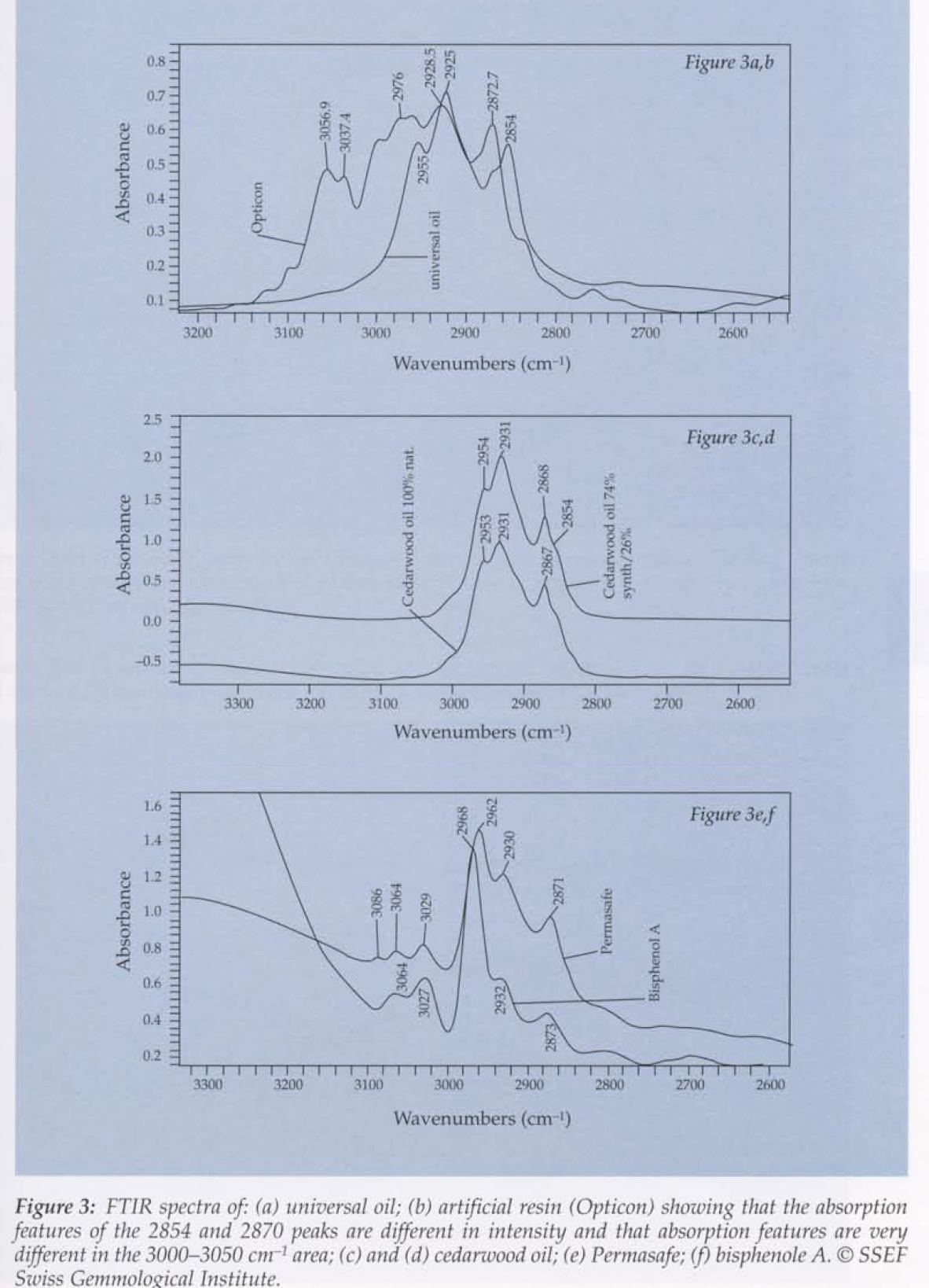
-
- UVVIS (Thermo Scientific Evolution 600) to be replaced
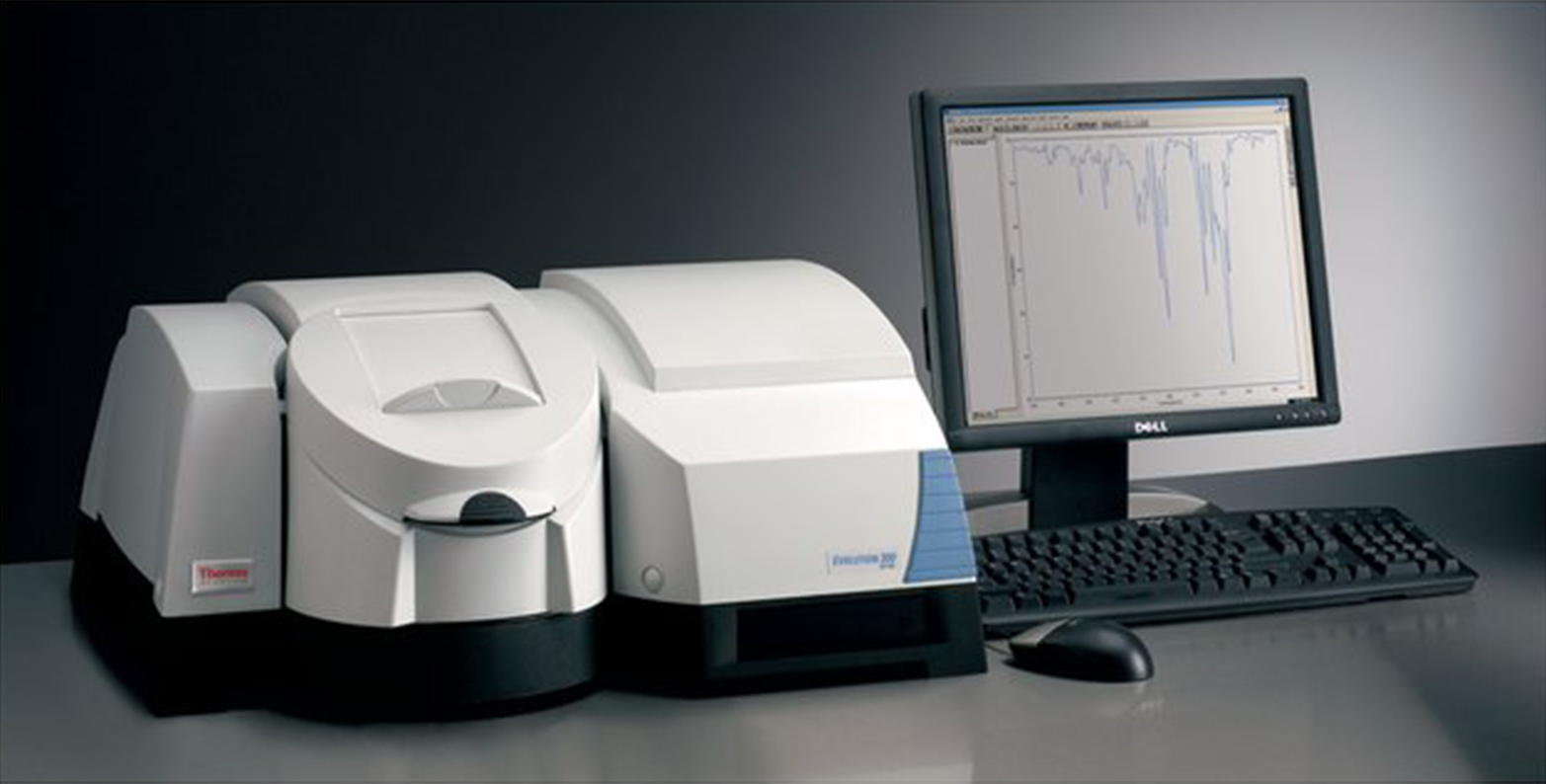 Ultraviolet-visible spectroscopy is considered an important tool in analytical chemistry. In fact, this is one of the most commonly used techniques in clinical as well as chemical laboratories. This tool is used for the qualitative analysis and identification of chemicals. However, its main use is for the quantitative determination of different organic and inorganic compounds in solution. Basically, spectroscopy is related to the interaction of light with matter. As light is absorbed by matter, the result is an increase in the energy content of the atoms or molecules. The absorption of visible light or ultraviolet light by a chemical compound will produce a distinct spectrum. When ultraviolet radiations are absorbed, this results in the excitation of the electrons from the ground state towards a higher energy state. The theory revolving around this concept states that the energy from the absorbed ultraviolet radiation is actually equal to the energy difference between the higher energy state and the ground state.
Ultraviolet-visible spectroscopy is considered an important tool in analytical chemistry. In fact, this is one of the most commonly used techniques in clinical as well as chemical laboratories. This tool is used for the qualitative analysis and identification of chemicals. However, its main use is for the quantitative determination of different organic and inorganic compounds in solution. Basically, spectroscopy is related to the interaction of light with matter. As light is absorbed by matter, the result is an increase in the energy content of the atoms or molecules. The absorption of visible light or ultraviolet light by a chemical compound will produce a distinct spectrum. When ultraviolet radiations are absorbed, this results in the excitation of the electrons from the ground state towards a higher energy state. The theory revolving around this concept states that the energy from the absorbed ultraviolet radiation is actually equal to the energy difference between the higher energy state and the ground state.
The Thermo Scientific Evolution 600 is a dual beam scanning UV-vis spectrophotometer for routine use. It has a wavelength range from 190-900 nm and is equipped with variable slits for high resolution or high sensitivity absorbance measurements. The instrument has built in control modules for kinetics and quantative analysis. The instrument is located in conjunction with a pair of potentiostats for spectroelectrochemical measurements.
- Faxitron (2D X-Ray imaging Cabinet System 43855)
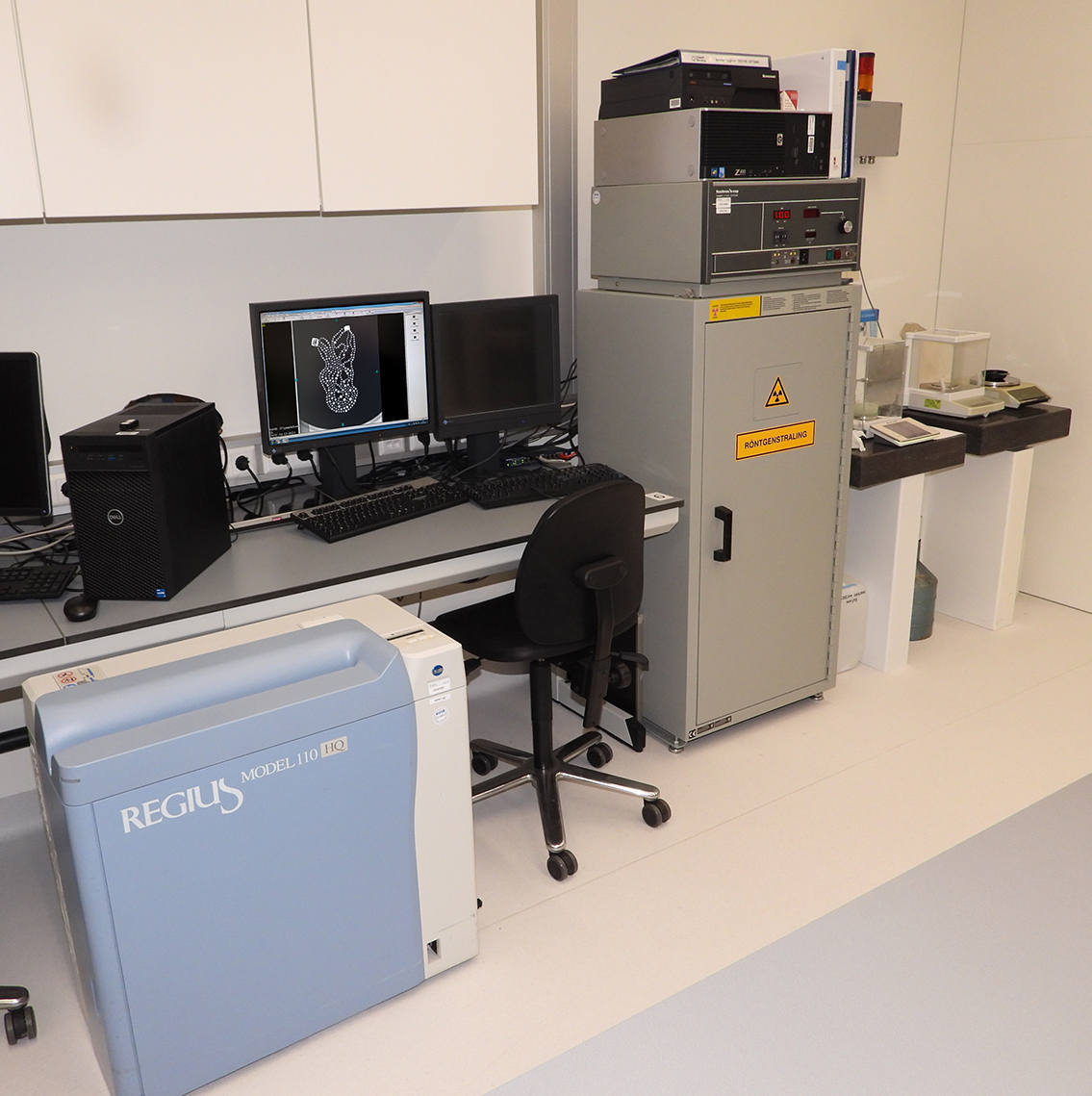
The Faxitron Cabinet X-ray System 43855 is a self-contained, radiation-shielded cabinet X-ray system designed to give high resolution radiographs of small to medium-size objects of all types. Simple operating techniques and radiation safety features made the Faxitron usually convenient in scientific and industrial X-ray inspection, quality control, reliability, and failure analysis or other operations requiring nondestructive testing techniques. High resolution by means of the microfocus options, also makes it very useful for medical pathology.
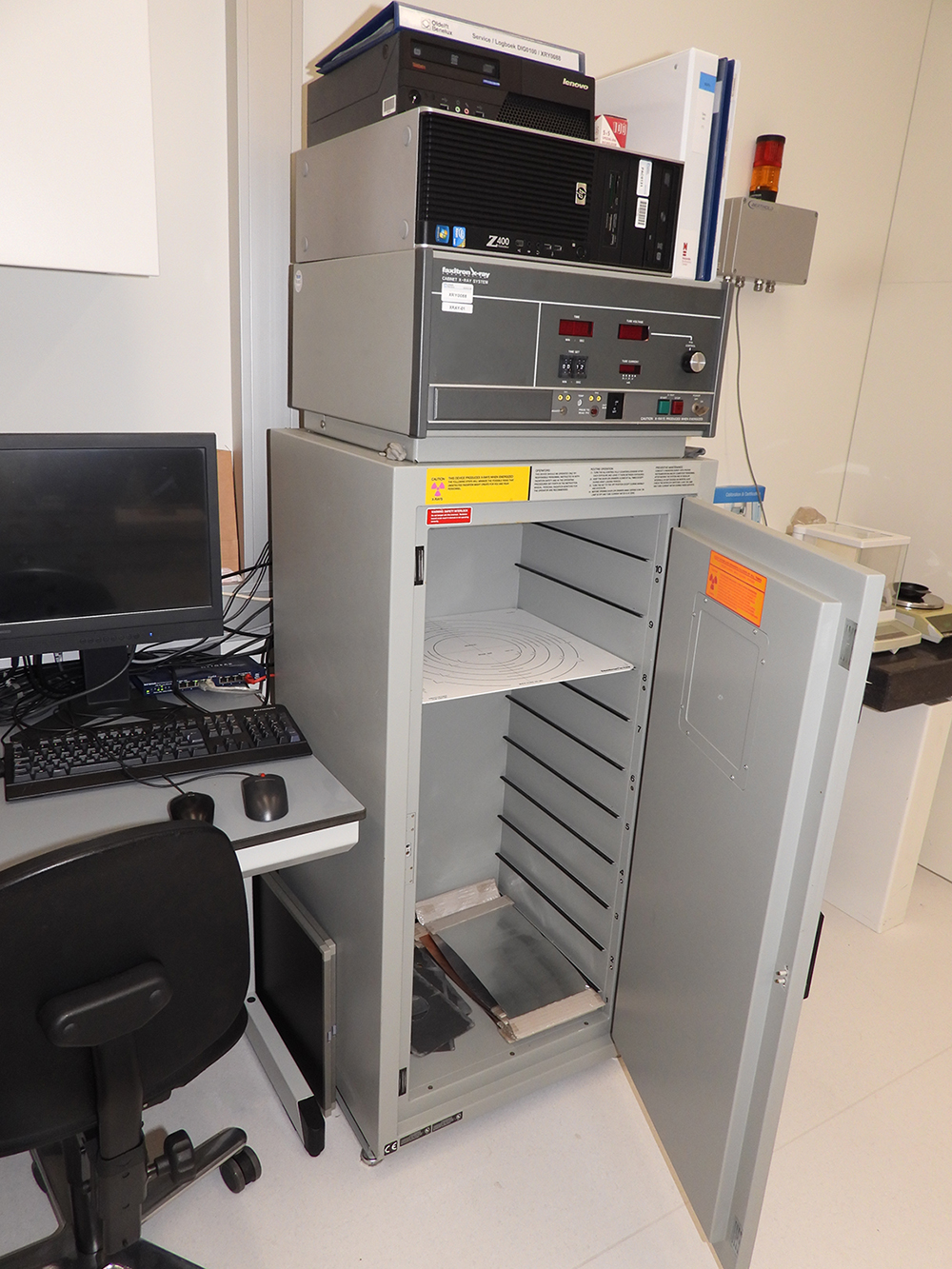
The faxitron is used for 2D X-ray screening of objects. At Naturalis, pearls, fish and birds are often examined using X-Ray.
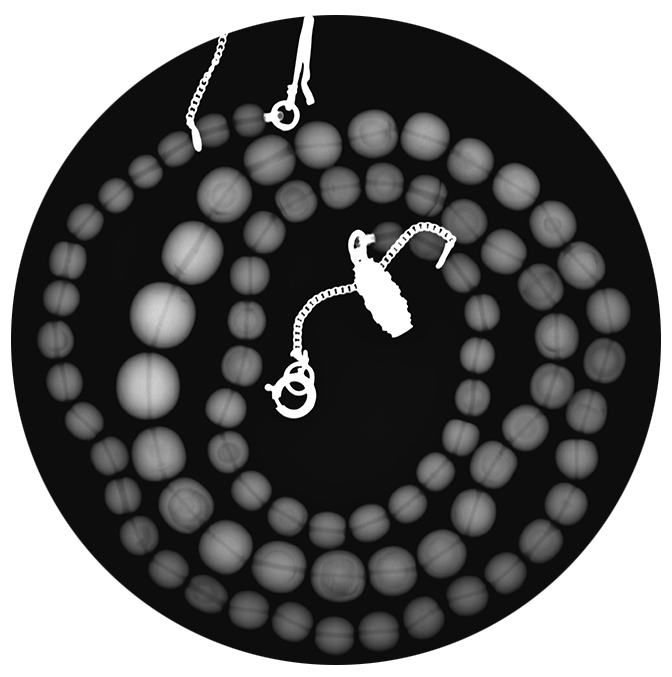
Natural pearls are mainly characterized by a uniform onion-like structure of nacre layers and conchiolin.
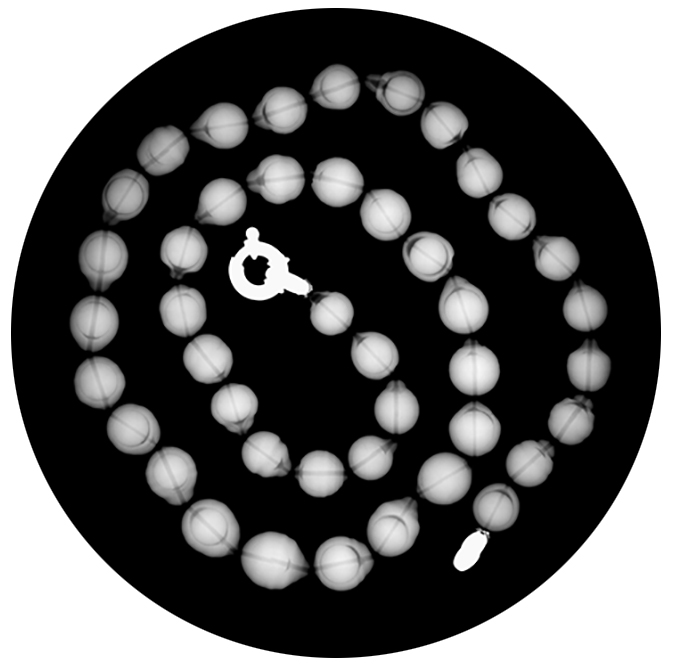
Cultured pearls with large implanted cores are visible with X-rays.

A 2D X-ray screening example of a fish (left) and a swallow (right).
- Raman (Thermo Scientific DXR)

The DXR Raman microscope is a research-quality tool designed specifically for today’s multi-purpose analytical labs. This is the microscope for the user who needs the high spatial resolution, ease of sample preparation and power of Raman microscopy, and who has neither the time nor the desire to become a Raman expert. The DXR Raman microscope delivers spatial resolution that is as good or better than any instrument on the market, together with unique features designed to make it as easy as possible to get high quality results. Users can configure the DXR Raman microscope with up to three different excitation wavelengths – at 532, 633 and 780 nm. The lasers, together with the appropriate filters and gratings, lock into place using SmartLock technology for precisely reproducible results. OMNIC™ software recognizes each component, records the serial numbers and checks for compatibility. A convenient storage container is provided for when the components are not in use.
- XRF - Edax (Orbis Micro-XRF Analyzer)
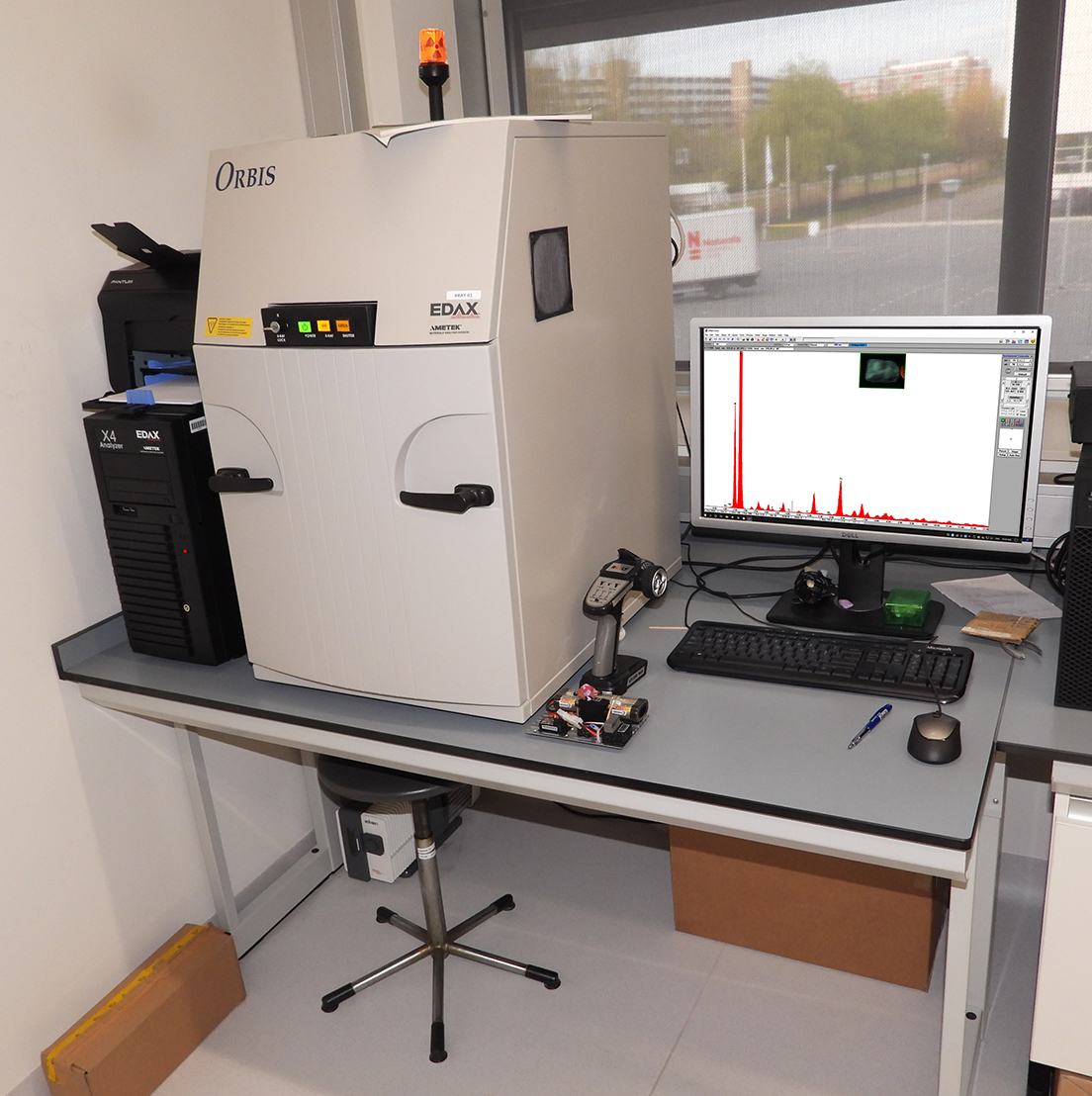 XRF is the emission of characteristic "secondary" (or fluorescent) X-rays from a material that has been excited by bombarding with high-energy X-rays or gamma rays. The phenomenon is widely used for elemental analysis and chemical analysis, particularly in the investigation of metals, glass, ceramics and building materials, and for research in mineralogy (rough and cut gemstones), petrology, forensic science, archaeology and many more. All elements from atomic number 4 (Be) to 92 (U) can be detected in principle, though not all instruments are equipped for 'light' elements (Z < 10). Qualitative analysis involves the identification of the lines in the spectrum and is fairly straightforward owing to the simplicity of X-ray spectra. Quantitative analysis (determination of the concentrations of the elements present) entails measuring line intensities for each element in the sample and for the same elements in calibration Standards of known composition.
XRF is the emission of characteristic "secondary" (or fluorescent) X-rays from a material that has been excited by bombarding with high-energy X-rays or gamma rays. The phenomenon is widely used for elemental analysis and chemical analysis, particularly in the investigation of metals, glass, ceramics and building materials, and for research in mineralogy (rough and cut gemstones), petrology, forensic science, archaeology and many more. All elements from atomic number 4 (Be) to 92 (U) can be detected in principle, though not all instruments are equipped for 'light' elements (Z < 10). Qualitative analysis involves the identification of the lines in the spectrum and is fairly straightforward owing to the simplicity of X-ray spectra. Quantitative analysis (determination of the concentrations of the elements present) entails measuring line intensities for each element in the sample and for the same elements in calibration Standards of known composition.
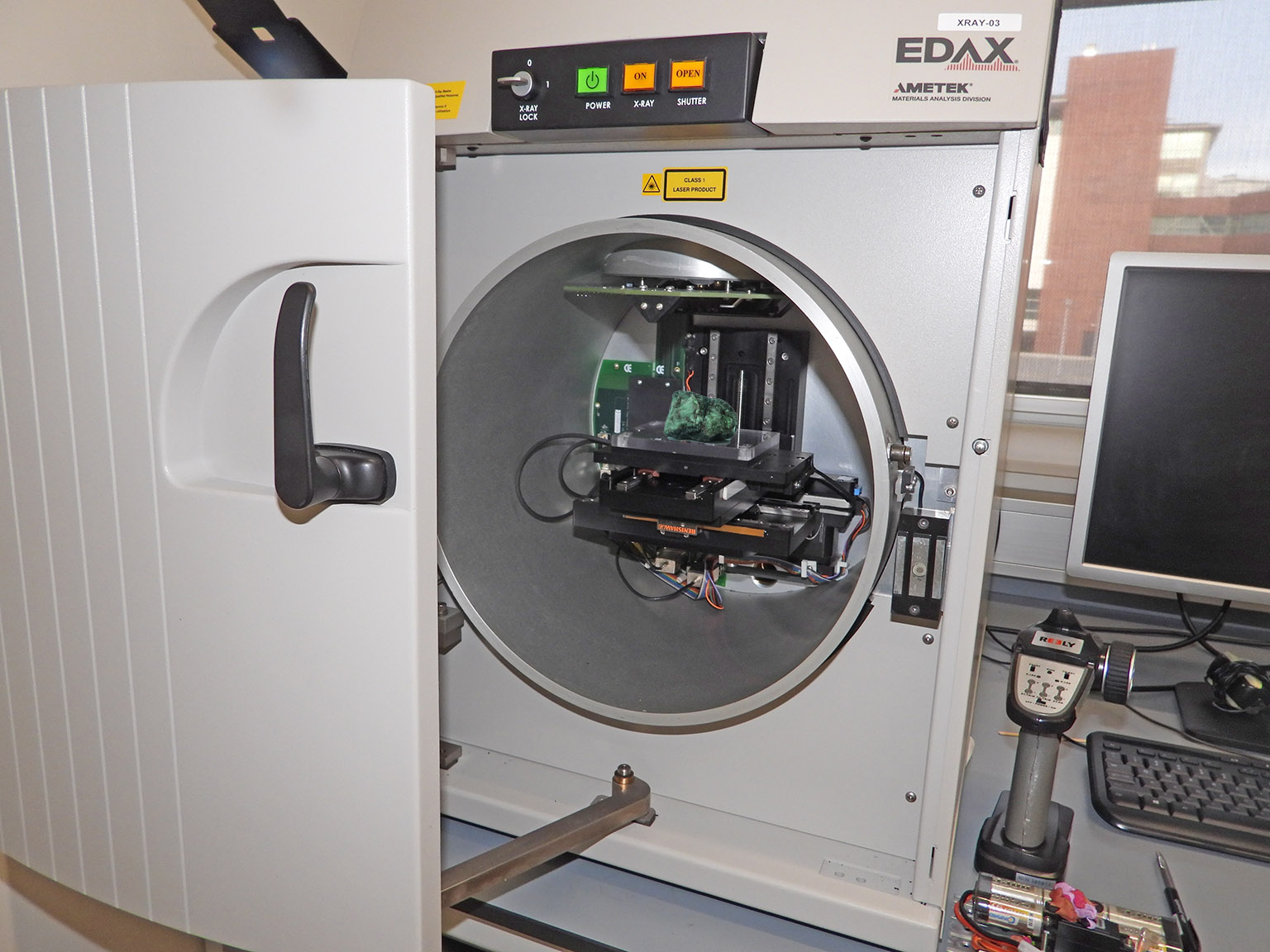 The large vacuum sample chamber with longer working distance accommodates a wide range of sample sizes and enables accurate analysis over rougher sample topography with no loss in signal intensity.
The large vacuum sample chamber with longer working distance accommodates a wide range of sample sizes and enables accurate analysis over rougher sample topography with no loss in signal intensity.
- Polishing Lab
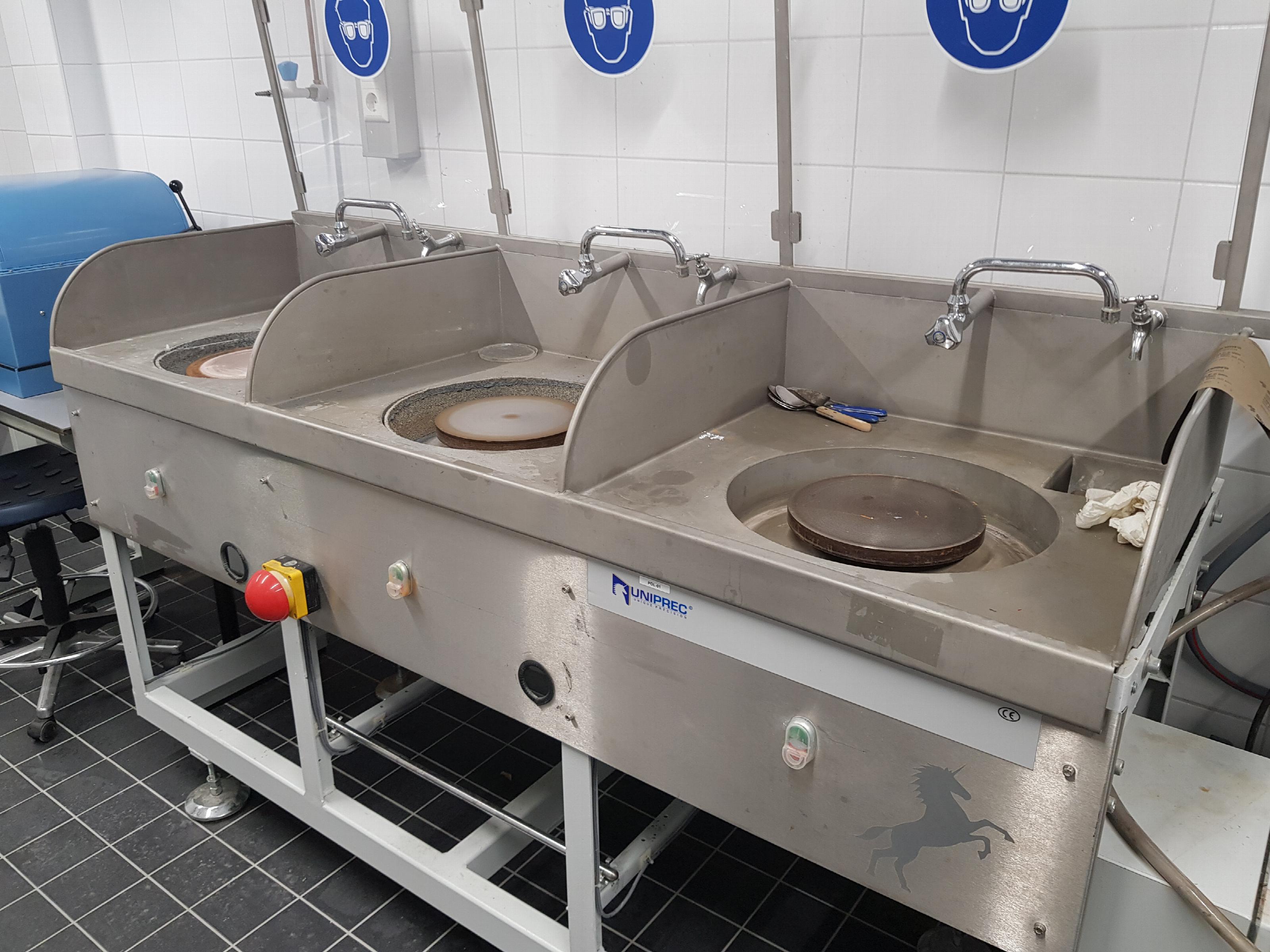 The Uniprec POL-01 System offers perfect grinding/polishing geological slides for examining minerals and other morphological geo-based materials.
The Uniprec POL-01 System offers perfect grinding/polishing geological slides for examining minerals and other morphological geo-based materials.
Also used for polishing mineral surfaces
The Uniprec POL-01 System is used for polishing geological/mineralogical thin section slides, also used for high polishing surfaces of geo-mineralogical rough samples.
Also paleontological slides (0.5-2 mm thickness) are one of the options to be made for Naturalis
The desired polishing can be achieved by special grinding/polishing from carborundum powder with a grain seize from 220 to 2000 and beyond. The “finishing” touch is done by using diamond polishing paste.
Examples of Tomographic Scans
Penisfilum and adjoining external male terminalia of Bittacus strigosus (Mecoptera)made with the Xradia Versa 520 (3D Micro X-Ray imaging). The video shows part of the external male genitalia of Bittacus Strigosus (Mecoptera), the curl is called "penis filum"
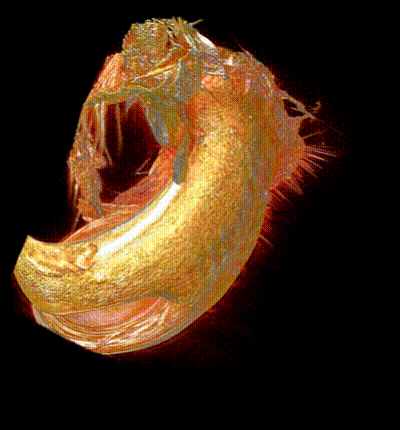
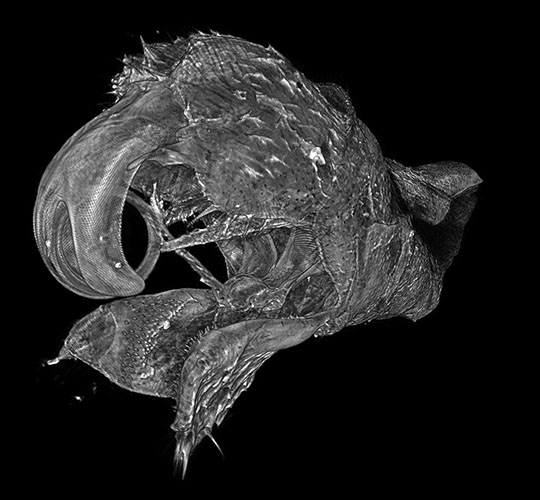
Some examples of 3D scans
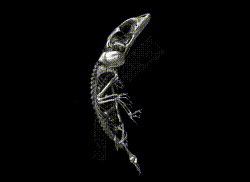
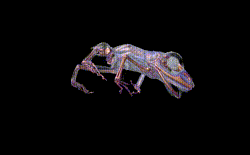
Teachingactivities
- Assisting researchers and teaching students with operating the Scanning Electron Microscope (SEM) and 3D imaging X-ray machines.
- Teaching students with operating the Edax XRF (micro-spot X-ray analysis and mapping), 2D X-Ray imaging and other laboratory techniques
Keypublications
- Zwaan J.C., Marel D. van der, Dommisse H.A. 2014. The ‘Sleeping Lion’ Baroque Pearl: An Update. Journal of Gemmology 34: 248-253. Go to website